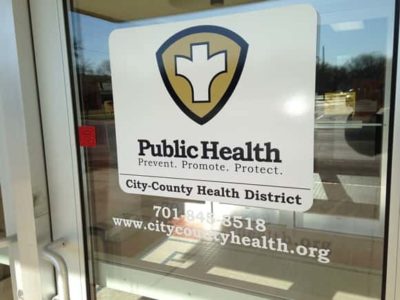
VALLEY CITY, ND – When it comes to body art, safety is crucial to prevent infections and ensure a positive experience. Body art includes tattooing (including permanent makeup and microblading), body piercing, branding, subdermal implants and scarification.
Body art facilities are regulated by health departments, in Barnes County, Central Valley Health District is contracted to work with body art facilities to ensure they are meeting the body art requirements to protect the public. These requirements are meant to protect the body art practitioner as well as the client. Risks can include infection at the site of the body art as well as the spread of infectious disease. “Before getting body art, take some time and walk through this checklist. We want to you to stay safe and be confident vetting your body artist,” states Katie Beyer, City-County Health District Administrator.
-
First, make sure that the facility and staff are licensed. You can ask to see the license, if it is not displayed. Central Valley Health District has inspection reports available and will notate if any violations are found.
-
The facility should have a separate area from the front for performing body art procedures.
-
Third, feel free to ask questions, find out what type of procedures are performed, you can ask to see pictures of the practioners work and discuss what you would like done.
-
Fourth, prior to the procedure, expect to fill out paperwork. If you are considering body art procedures, and have an existing medical condition such as heart disease, skin disorders, allergies, diabetes, or conditions that affect the immune system, inform the practioner as they may want you to discuss the decision with a health care professional.
-
Fifth, when you go into the procedure area, be sure the practitioner washes their hands and wears gloves. Cleans the area where the body art will be located. If shaving the skin is necessary, make sure a disposable razor is used. Needles and other sharps should be opened in front of you before the procedure. Jewelry used for piercings should be made of surgical implant-grade stainless steel; solid 14k or 18k white or yellow gold, nioboium, titanium, or platinum; or a dense, low-porosity plastic which his free of nicks, scratches or irregular surfaces and has been properly sterilized before use.
-
Inks used in tattooing should be placed in single use cups. Ink should not be taken directly from the bottle or returned to the bottle after the procedure.
-
The practioner should provide you with aftercare instructions. Body art procedures take time to heal, and written instructions should be provided for you to reference during the healing process. Aftercare instructions should inform you to consult a physician at the first sign of infection – redness and burning, discharge of colored pus, swelling, heat at the site and fever.
“Each of us needs to do our part to keep ourselves, our families, and the public healthy. Taking the time to ensure body art procedure is following these guidelines and is in good standing, will help you stay safe!” states Beyer.
To request a copy of inspection records, visit https://centralvalleyhealth.
